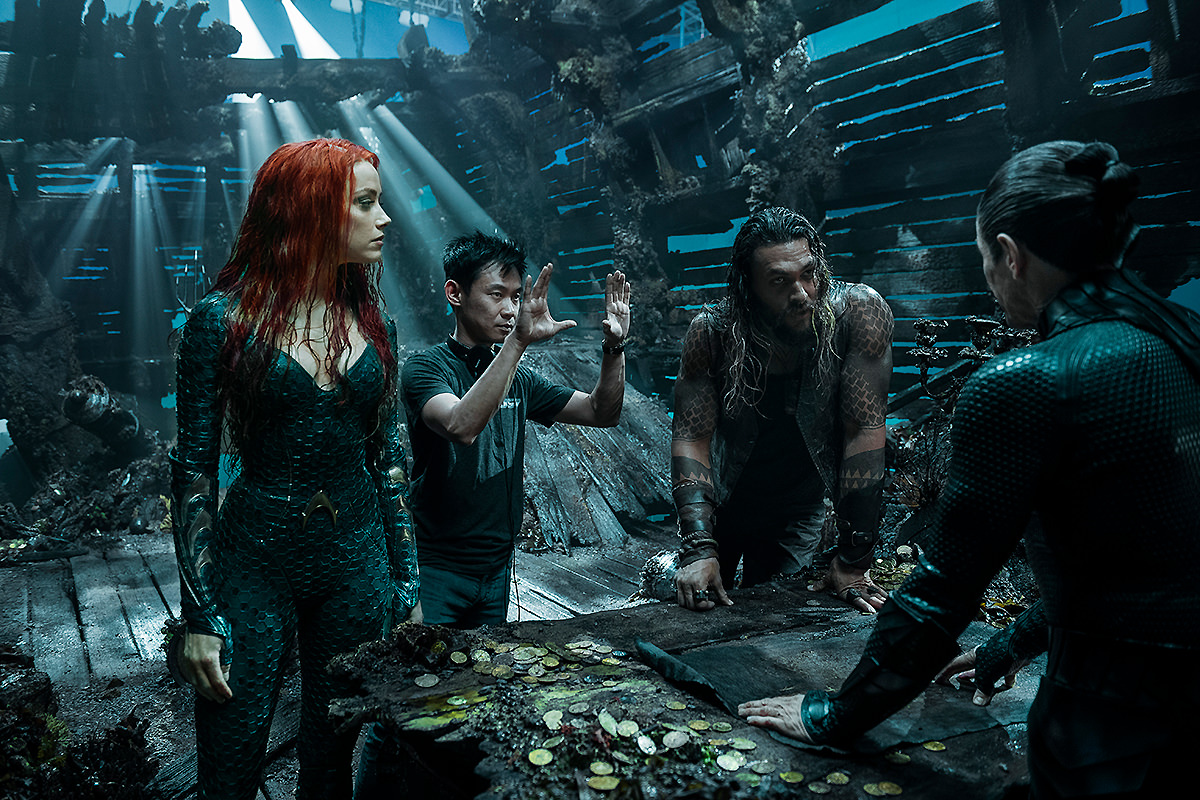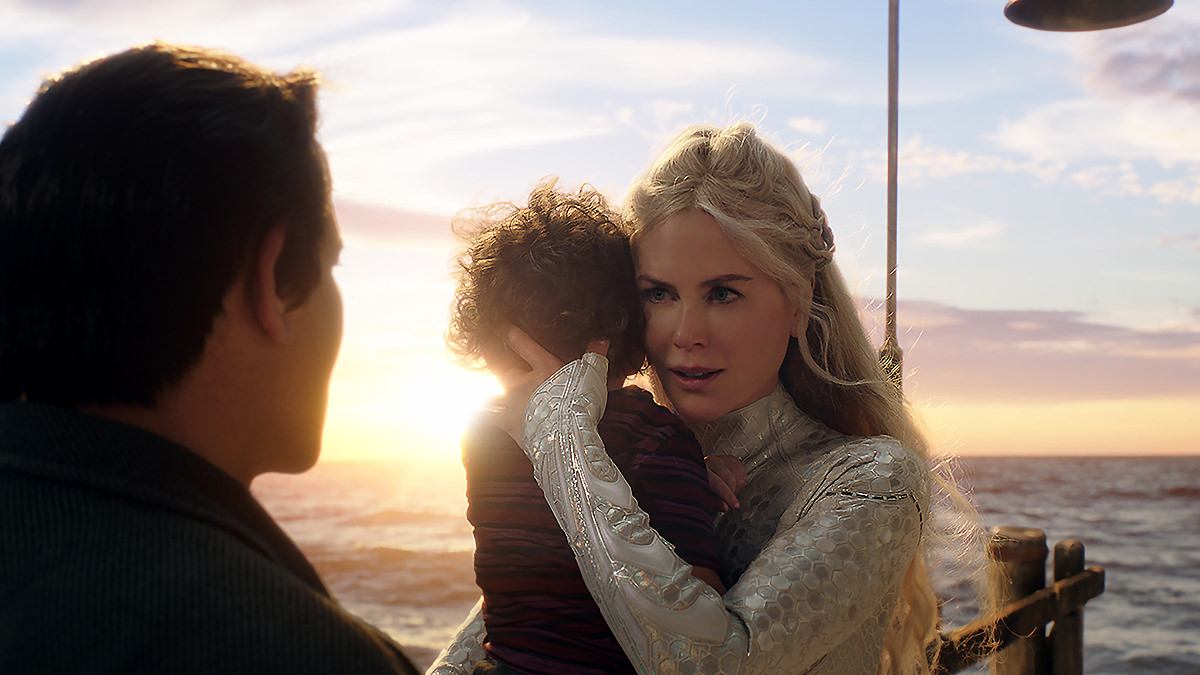James Wan: returning home with Aquaman
Director James Wan on Australian crews, locations and the importance of story.
 Amber Heard, director James Wan and Jason Momoa on set / Photo credit Jasin Boland ™ © DC Comics
Amber Heard, director James Wan and Jason Momoa on set / Photo credit Jasin Boland ™ © DC Comics
Up until now James Wan’s career has been almost exclusively international.
The Australian director shot the short film Saw in Melbourne some 15 years ago. But then he and co-creator/star Leigh Whannell took it to the US as a proof-of-concept for what would become Saw – the box office hit that spawned the blockbuster horror franchise.
In those intervening years Wan built an impressive CV of horror franchises (including Insidious and The Conjuring), and nimbly switching gears to handle one of the world’s biggest action franchises with Furious 7.
But aside from that Saw short and a 72-minute film he co-directed while studying at Melbourne university RMIT, Wan hadn’t made anything back home.
“Here's the crazy part: I actually never made a movie in Australia,” Wan says, “in terms of my feature career.”
“Here's the crazy part: I actually never made a movie in Australia.”
Until Aquaman. The majority of the DC juggernaut which stars Jason Momoa, Amber Heard and Nicole Kidman filmed in Queensland and New South Wales in 2017.
Wan is now speaking on the phone from New York – the latest stop in a whirlwind, worldwide press tour for Aquaman, an action-adventure superhero tale that falls in the same universe as Superman, Batman and Wonder Woman.
You wouldn’t guess Wan’s jumped multiple time zones in recent weeks – he answers with an excitable “hello!” and the passion he has for the project reverberates through the receiver. The first (very positive) reviews for Aquaman can only be adding to that.
Wan says “of course” he was part of the push to bring Aquaman to Australia – and not just because it’s home.
“Initially they wanted to shoot the movie I think in England somewhere, because like Justice League and Wonder Woman, all those films were shot in the UK. But I just didn't think it was right for my vision,” he says.
“I wanted a movie with beautiful blue skies and beaches, and the UK just wasn't the right look for that.”
The locations that ended up capturing that included Queensland’s Currumbin Beach, The Spit on the Gold Coast, and the NSW Tweed Coast.
“And I don't know, it was about time I felt I should come back with a big project,” he says.
Other factors were at play too. Aquaman benefitted from support through the Federal Government, Screen Queensland’s Production Attraction Strategy and the City of Gold Coast; it filmed on the southern hemisphere’s largest sound stage at Queensland’s Village Roadshow Studios; accessed Film Victoria’s fund specifically for PDV; and it was created by crews who have worked on everything from Thor: Ragnarok to Alien: Covenant.
“The crew back home are just so fantastic, having cut their teeth on so many big films… just really, really great technicians and artists back there (and) they did such a great job in helping me realise the film.”
Australian costume designer Kym Barrett, who worked on The Matrix trilogy and The Amazing Spider-Man, is behind the many vibrant clothes – including Nicole Kidman’s “scales but not scales” outfit as the queen of Atlantis.
 Nicole Kidman as Atlanna / Courtesy of Warner Bros. Pictures
Nicole Kidman as Atlanna / Courtesy of Warner Bros. Pictures
Witness to this was Alisha Worden, who was a Standby Costume attachment. Worden was one of three local attachments organised by Screen Queensland, which also included Benjamin Southwell (Producer attachment) and Sarah Dahl (Script Supervision).
“It's a good thing and to be able to filter these projects through them and having people come in and learn,” Wan says. “The more experience you get on set… the better it is.”
Wan says he learns something new on each film, which he then can take into the next one. And the things he discovered while creating those smaller-budget films, where time and budget constraints force you to be creative, have come in handy years down the track.
“To some degree, cutting my teeth on the smaller indie films means you learn tricks. You try to be as clever and as resourceful as you can be,” he says.
“... cutting my teeth on the smaller indie films means you learn tricks ...”
“But ultimately I find that between my smaller films and my bigger ones, there's really no difference in terms of storytelling.
“Storytelling at the end of the day, is storytelling. It's all about writing characters and stories that people care about and engage with and that's something that I learned from all my films. Obviously the big difference on this film is I get bigger toys to play with.”
Those “toys” were mainly around visual effects. Unlike a studio movie such as Furious 7, where the characters and world already exist from previous films, Aquaman presented a new challenge: the film draws from its comic book origins for references, but Wan needed to build the look and palette of this underwater realm. And because it’s underwater, it also impacts the way people sound, or how their hair moves.
“I've never made a movie with those kinds of visual effects before and to have the budget to be able to hire amazing visual effects houses and talent and screen artists all around the world… that's what ultimately allowed me to create (this),” he says.
“It's a big world-creation film and the visual effects really allowed me to realise my vision for the big screen. It was very important because I wanted to do stuff that people haven't quite seen before.”
A number of Australian-based visual effects houses including Method Studios and Luma were called on for this purpose. Luma's work included creating full CG builds of a city and bioluminescent kelp forests, while Method Studios’ Melbourne team was involved in the creation of a seaside village sequence evident in the extended trailer.
Wan says although studios can be notoriously controlling, the relationship he had built with Warner Bros. through his work on The Conjuring franchise (whose five movies have reportedly earned more than $500 million US) made a difference.
“I was very fortunate on this particular film. Having made enough movies for Warner Brothers they actually had a lot of faith in me and I had a lot of freedom on this film. I had the same kind of freedom on this movie as I would have had on let's say Saw or Insidious, so I feel very lucky,” he says, adding with a laugh: “But then I've got no one to blame if the film works or doesn't work.”
If those early reviews are anything to go by, he doesn’t have anything to worry about.
Aquaman releases in Australian cinemas on Boxing Day.
For more about Australia’s production incentives see: backgrounder or Ausfilm

What to read next
The co-founders of Emmy Award winning studio Ludo on creating a business that’s sustainable, yet bursting with creativity.
20 Nov 2018
Caris Bizzaca